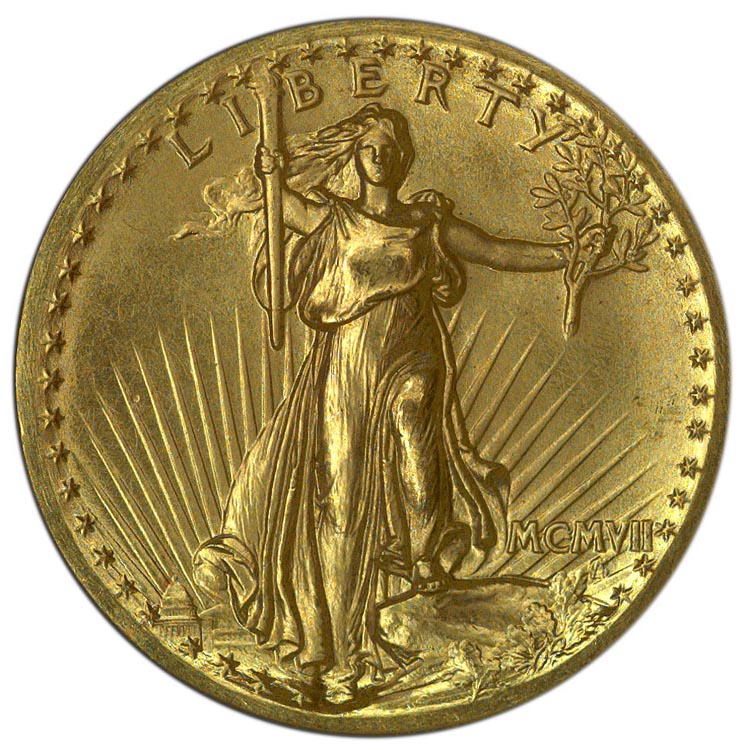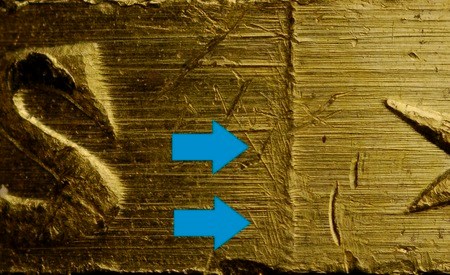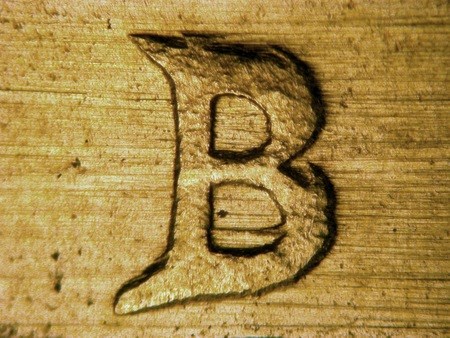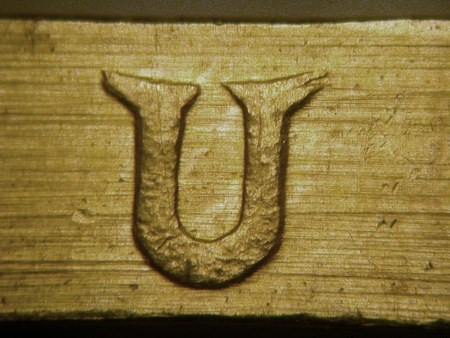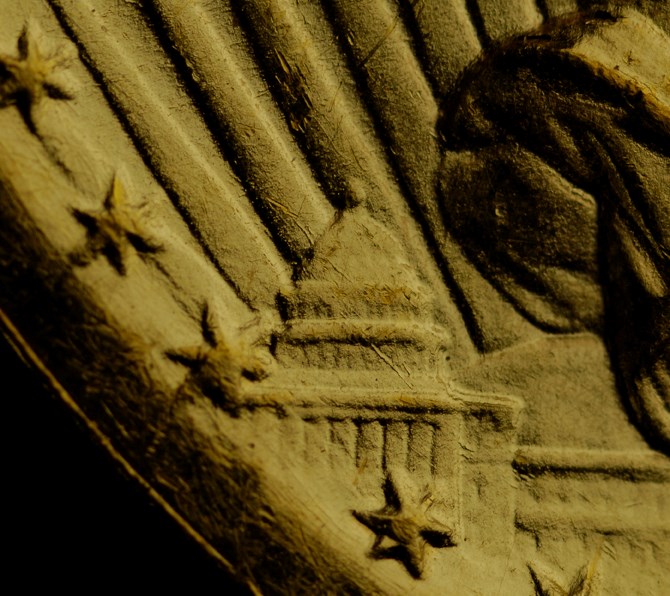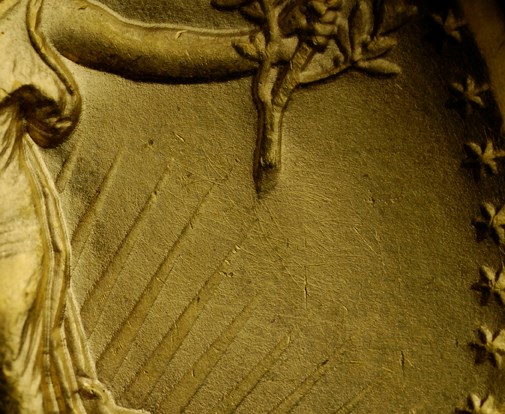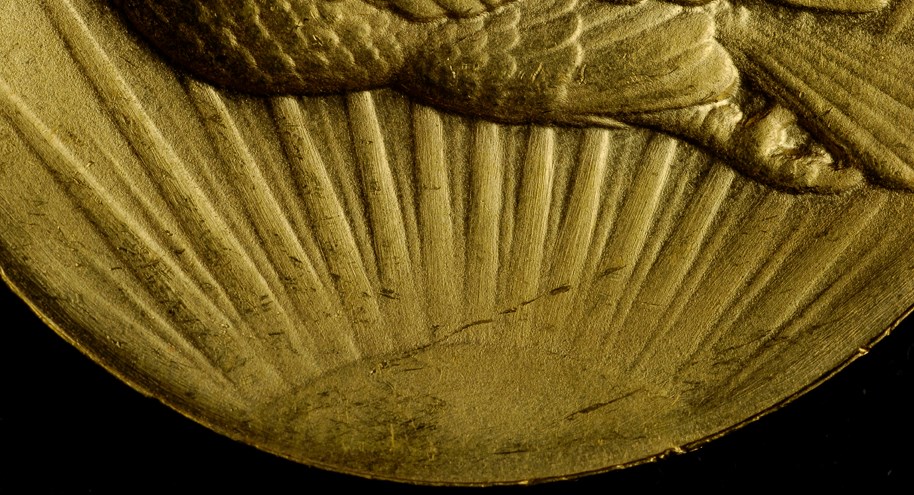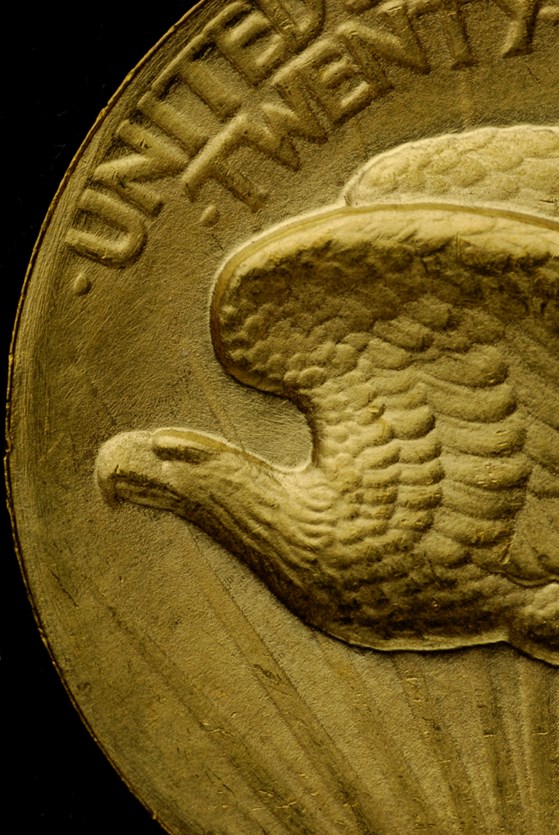Understanding and Attributing Proof 1907 High Relief Double Eagles
Posted on 4/21/2015
Saint-Gaudens’ 1907 High Relief Double Eagle is a coin of aspiration and desire. It uniquely conveys, in its small, self-contained form, the belief that America is a great nation and that everything we do – including our monetary system and its coinage – should be a reflection of this might. The low relief, Arabic Date modification of Saint-Gaudens’ design ultimately adopted for prolonged use is indeed a lovely coin; of course, it fails to capture the majesty and allure of the original model.
The High Relief is also an important coin for collectors. Being comparatively common and of relatively recent fabrication, surprisingly little academic study has been focused on the issue. Today, at last, it is an area of concentrated study. Fundamental questions are finally being answered for the first time.
For example, the actual mintage figure of these coins is only now being revealed. For decades it was universally reported in numismatic references that 11,250 were struck. Walter Breen believed this number had the most support. Based on exhaustive research, scholar Roger Burdette reports 12,867 struck, of which 80 were melted, leaving a net mintage of 12,787. The Redbook reports a mintage of 12,367, suggesting removal of 500 pieces struck on a medal press in late summer 1907. Frank A. Leach, Director of the United States Mint, provided a report of George B. Cortelyou, Secretary of the Treasury, on February 18, 1908 in which he cited yet a different figure: 12,153.
Another looming question concerns the production of proof coins. While Roger Burdette’s incomparable research reports that 42 High Reliefs were distributed directly to collectors and 752 were presented to government officials, no documentation concerning the production of proofs exists. But examples described as proofs have long traded in the marketplace and have been included in famous and important collections, including that of Adolphe Menjou (Numismatic Gallery, 1950). Clarke E. Gilhousen (Superior, 1973) had a satin finish proof and an incredibly rare matte proof that sold at public auction last in 1981…for $34,000, a big result at that time. NGC does certify proof High Relief Double Eagles, having graded 254 of them according to the NGC Census Report (03/15).
Why are proof High Relief Double Eagles controversial and so misunderstood?
Immediately upon issue, High Relief Double Eagles traded for a premium and, while technically currency issues, very few saw actual circulation. A significant portion of the original mintage was distributed outside of currency channels and the remainder was scooped up by collectors. With regard to their production, all received multiple blows from the dies, a number were struck on a medal press, and all received some degree of special handling during and post-striking. And certain High Relief Double Eagles traded as proof coins in the marketplace right away.
The deep recesses of the High Relief dies didn’t allow for polishing seen on brilliant proof coins of previous coin types, nor was that mirror-like sheen sought by the designers of this coin. Coins called proof and those called mint state were similar in appearance, thus leading to confusion. Coins with very crisp strikes, heavy swirling die polish lines and other special attributes were called proofs.
Numismatists Walter Breen and David Akers were both of the mind that proof coins were struck and exhibited satin surfaces, numerous die lines and sharper detail. But neither attributed proofs to a single die pair. By the mid-1980’s, however, coins struck from just one die marriage and one collar were associated with these special features and singularly called proofs. The collar identified for striking proofs was used only with this one die pair and was never used again with other dies to make High Relief Double Eagles. As a result, the collar is now referred to as the proof collar.
In addition to being used to strike proof High Relief Double Eagles, the proof collar was used in the production of pattern Extremely High Relief Double Eagles. It is the serif-letters collar described and cataloged as “Edge 3” (or “Edge B-II”) by Roger Burdette in Renaissance of American Coinage 1905-1908. According to his research, it was used to strike Extremely High Relief coins from March to April of 1907 and on December 31, 1907. Prominent diagnostic features make it very easy to identify (see below).
Just two other collars were used to produce all business strike High Relief Double Eagles; one for the Wire Rim and another for the Flat Rim coins. Neither is known to have struck any coins other than High Relief Double Eagles, and both were used with multiple die pairs.
Distinguishing proofs from business strikes was a challenge for the uninitiated. NGC filled this void by attributing coins struck from these dies and with the proof collar as proofs. This attribution is reinforced by several considerations:
- In this marriage, both obverse and reverse dies are in perfect state. It is the earliest use of both dies. Later marriages using either the obverse or reverse die show deterioration and cracks.
- The collar was used only with this single pairing of dies. It is the same collar that struck pattern Extremely High Relief coins.
- Coins struck from this die marriage are universally well struck.
- Coins from this die pairing universally and uniquely exhibit a lustrous sheen, similar in many respects to satin proof 1909-1910 Indian Gold.
- Coins from this marriage are, on average, nearly two points higher grade than coins from other die marriages (MS 64 vs. MS 62).
Proof coins account for 6.2% of the total number of 1907 High Relief Double Eagles certified by NGC [254 out of exactly 4,000 examples certified (03/15)]. Coincidentally, and this is nothing more than an interesting coincidence, that is the exact same percentage of coins distributed to collectors and government officials by the Mint [794 out of 12,787 examples coined].
The exact intent of the coiner is, of course, unknown. Of value to collectors is that coins showing special traits receive individual recognition by being called proofs. A superior course, it could be argued, would be to individually attribute all High Relief Double Eagles by their die and collar marriage. Alas, little demand for this exists at the present time. Instead, collectors and dealer suffice with a tripartite classification: Proof, Mint State Wire Rim and Mint State Flat Rim. This system accords directly with the collars used to strike these coins, giving the High Relief a rather unique and unusual attribution feature among US coinage.
Attribution Features of Proof High Relief Double Eagles
The images below show diagnostics of the collar, obverse and reverse dies used to strike 1907 High Relief Double Eagles. This marriage shows the earliest use of the obverse and reverse dies and the only use of this collar to produce High Relief Double Eagles. Note that the obverse die and reverse die were reused in marriages with other dies and struck both Wire Rim (in middle die state) and Flat Rim (in late die state).
Proof Collar. Image 1. A series of die lines move diagonally upward from the left side of the collar segment between the S of PLURIBUS and the star.
Proof Collar. Image 2. Recut B in PLURIBUS showing initial impression partially impressed to the north.
Proof Collar. Image 3. Notched upper serif of U in PLURIBUS.
Obverse Die. Image 1. A heavy die line runs though the base of the Capitol dome.
Obverse Die. Image 2. Swirling die polish can be seen in the obverse right field. Two lines emerge from base of branch.
Reverse Die. Image 1. Die lines are visible within the raised portion of all sun rays, following the direction of the die recesses.
Reverse Die. Image 2. Heavy polish in negative space between wing and eagle’s neck. Heavy polish along left periphery, especially 9:00 to 11:00.
Stay Informed
Want news like this delivered to your inbox once a month? Subscribe to the free NGC eNewsletter today!
